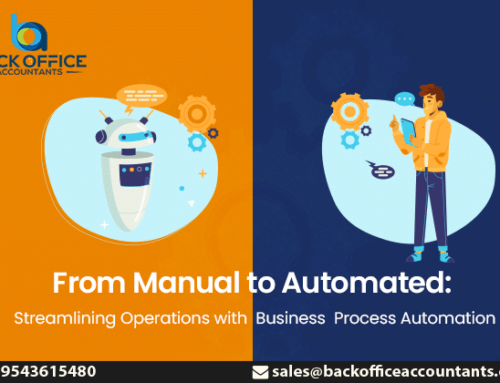A business’s financial stability and market edge revolve around its ability to maintain liquidity with seamless cash flow from swift and effective payment processing. Whether investing in growth, meeting payment obligations, or seizing new opportunities, efficient Accounts Receivable management plays a central role.
Businesses with inefficient AR often face cash shortfalls, delayed payment handling, and business risks at every turn. While enterprises take essential steps to improve their in-house Accounts Receivable, external challenges can impact a business’s AR in multiple ways”, says one of our Accounts Receivable experts at Back Office Accountants.
Economic uncertainties, supply chain interruptions, customer relationship issues, industry-specific risks, and regulatory changes are some of the common challenges that directly affect Accounts Receivable, inhibiting cash flow and triggering a variety of business risks. Fortunately, due to rapid technological advancements and accessibility to new technologies, today’s businesses are actively adopting new advancements in AR technology to navigate these challenges.
If you are a business aiming to improve your AR process and bypass these challenges, you must also look at these emerging trends that might hold the key to solving Accounts receivable management issues plaguing you. To make your job easier, we have examined the potential and beneficial AR trends and handpicked those that can significantly help you elevate your AR process. Read on:
4 Emerging Trends in Accounts Receivable Management for 2024:
1. Accounts Receivable Analytics:
Though Accounts Receivable analytics seems like a current trend, it is still yet to be fully leveraged by businesses for optimizing AR performance. As of 2024, businesses have only begun seeing AR analytics’ benefits, such as gaining actionable insights into payment behaviors, creditworthiness, and collection effectiveness. Analytics also forecast cash flows, assess DSO (Days Sales Outstanding), and provide better insights into risk profiles.
However, AR analytics still has a lot of potential. One underutilized avenue is leveraging predictive modeling to forecast payment trends and optimize credit terms. Establishing and utilizing KPIs to optimize workflows, aggregating data to analyze customer behavior, and implementing automation to streamline AR workflows are strategies that can significantly enhance AR efficiency.
2. AR Integration with ERP and CRM Systems:
It is 2024, and it still surprises us that some businesses have yet to integrate their ERP and CRM systems with their Accounts Receivable.
Businesses face several challenges when integrating systems, including compatibility issues, data discrepancies, high costs, and security risks. However, the benefits far outweigh these difficulties. Companies that have yet to integrate should consider doing so, as many are expected to upgrade by 2025.
Integrating CRM, ERP, and AR systems gives businesses a clear view of customer interactions. This improves management, streamlines the order-to-cash cycle, enhances reporting, and boosts cross-functional collaboration for better accounts receivable.
3. Real-time Payments for Better Collection & Customer Experience:
Payment delays have troubled businesses for a long time. They disrupt cash flow, cause financial stress, and make planning and growth harder. Companies are now focused on solving this issue with real-time payment solutions. New trends are helping speed up progress:
- Seamless API integrations now enable real-time payment status updates, minimizing delays.
- Instant payment gateways are drastically cutting down processing times with immediate transactions.
- The incorporation of QR code payments is accelerating payments via mobile transactions.
- Businesses are adopting blockchain-based payment solutions to eliminate intermediaries, reduce errors, and provide immediate transaction settlements.
4. AI & ML for Boosted AR Efficiency:
Analytics brings new insights and optimization. But some businesses struggle with data complexity. Companies can use AI and ML to overcome these challenges.
“All they need is proper data integration, and AI and ML will improve AR workflows,” says our Accounts Receivable expert at Back Office Accountants.
While analytics help AR improve its efficiency, AI and ML further boost the entire process, making AR a goldmine of insights for optimization.
Businesses incorporating AI and ML into their AR processes leverage predictive analytics for strategic decision-making, predict customer credit risks to minimize harmful debt exposure, enable intelligent invoice matching, automate reconciliation, and make real-time fraud detection possible in AR transactions.
The Next Steps: Accounting Technology Adoption
The best thing about the emergence of Accounts receivable management trends is that every technology adoption can solve at least one particular problem plaguing every business’s accounting and bookkeeping processes.
If you’re a business aiming to leverage emerging technology to improve and enhance AR processes, start by reviewing your core AR operations to identify challenges and areas for improvement. Set clear goals, explore automation and analytics tools, and choose a digital transformation path carefully. At Back Office Accountants, we follow these steps for all our clients seeking this technological transformation.
As back-office accountants specializing in Accounts Receivable services, we closely monitor and adopt emerging AR technologies to drive digital transformation for our clients.







